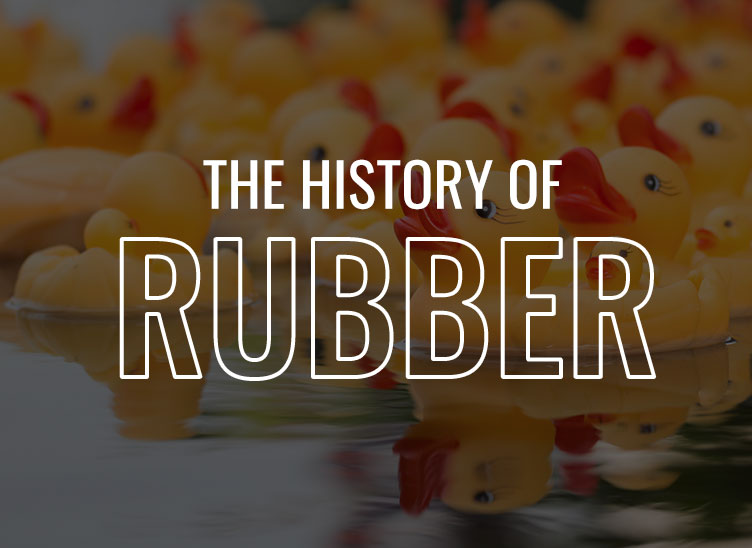The History of Rubber

Rubber is a common material that most people are familiar with today. It is found in shoes, tires, fittings in machinery, plumbing parts, hoses, gaskets, and so much more. But when was this product discovered and how did it become such a staple to the modern world? To help answer these questions, here is a quick overview of the history of rubber.
The Origins
The known history of rubber goes back to before the 1600s in Meso-America. The indigenous people used it for generations for many things, including creating balls and dipping their feet in it for a protective, temporary covering. The base of rubber is a white sap that comes from tropical plants, like the rubber trees in the rainforest. One of its first uses in the European world was as an eraser. It was found that rubbing the matter over writing would erase it, hence the name “rubber”.
Many people consider the first scientific findings of rubber to have happened in 1735, by Charles de la Condamine. He tried to convince everyone that this material would be ideal to create flexible tubes. In 1820, a British industrialist named Nadier produced rubber threads. He intended to use them in clothing construction and accessories.
Taming the Substance
Rubber helped make some cities in South America very wealthy, but soon plants were taken to other parts of the world and planted. The world was becoming excited by the many uses of rubber and what it meant for industry and everyone wanted more of it. Several products were produced, but they all came down to several problems. For one, cold weather changed rubber to be brittle and break easily. On the other hand, rubber was too hot and sticky in hot weather.
Goodyear discovered the process of vulcanization by accident in 1840. He had been working hard to make rubber a more usable product and accidentally dropped rubber on a hot stove top. Vulcanization is the process of mixing rubber with lead and sulfur and dropped in high heat. The result was a product that came back to its original form after being stretched. Once this was discovered, the process was refined more and the uses of the product dramatically increased.
Modern Rubber
Rubber is no longer dependent on the liquid, tacky substance from plants. During World War II, more rubber was needed than any producers could create. Instead, crude oil was used to make a synthetic version that is still widely used in many products. The word “rubber” now refers to a class of materials with high elasticity, rather than the original, plant-based substance.
The process of creating rubber products has also changed. The rubber extrusion process helps to push rubber through to a rubber molding that is in the shape of the finished product. Additives are put into the substance and then the vulcanization process is done by adding high heat. The product is then cooled quickly to solidify the product and keep it in the desired shape.
From there, products are used in automobiles, solar panels, military defense, and more. These products help keep water in or out, provide insulation, or to protect other parts from damage. Our world with modern technology is a dependent on rubber in all its forms. So next time you see something made of rubber in any shape or size, you can understand how it came about.
